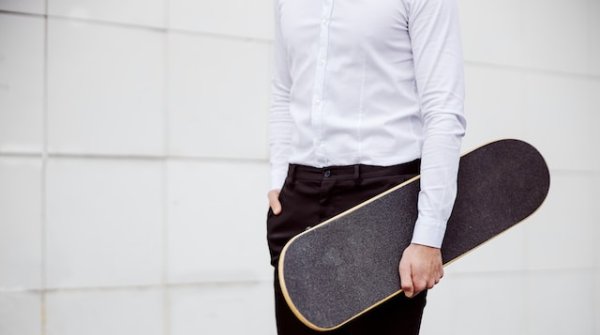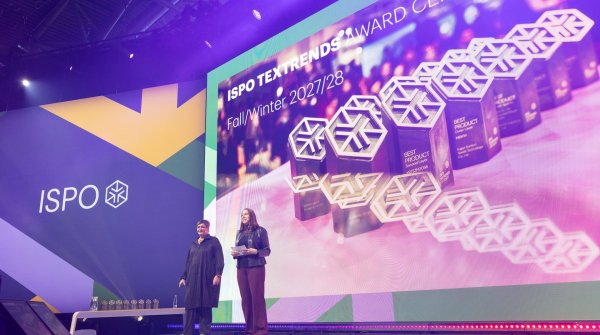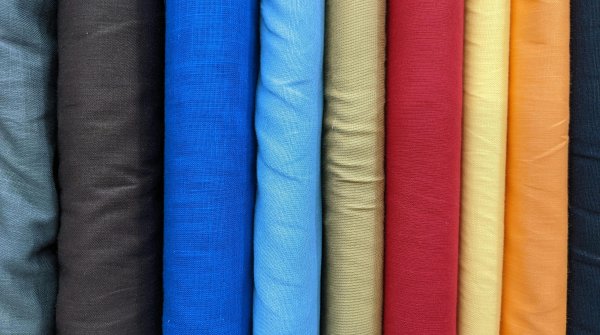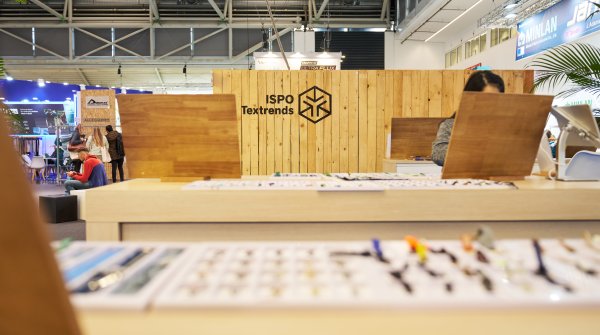Louisa Smith is a globally recognized textile and fashion expert. Her innovative spirit and expertise make her a sought-after opinion leader in the textile industry - also in the sports and outdoor sector. She is a leading member of the jury for the ISPO Textrends Awards and presents them once a year at ISPO Munich. Louisa also supports the ISPO Award team with a sustainability check and checks the sustainability information of relevant products - for more transparency and real change in the sports world.
What a trade show! The 10th anniversary of ISPO Textrends and the developments of the last ten years are unmistakable at ISPO Munich 2023. The "S" word, sustainability, is now anchored in the DNA of the textile industry and is no longer just lip service. It is an everyday part of the textile community's mission to continue developing clean collections.
This does not mean that one fiber family is better than the other, but that all sectors are making progress in developing clean and sustainable products - from natural to man-made celluloid and synthetic fibers. And this responsible attitude also includes a plan for the end of a product's life before it has even begun.
Walking around the exhibition, it became clear that it's not just the textile mills that are taking responsibility, but also the brands and manufacturers, many of whom are keen to highlight their contribution to waste prevention and returning waste to the circular economy.
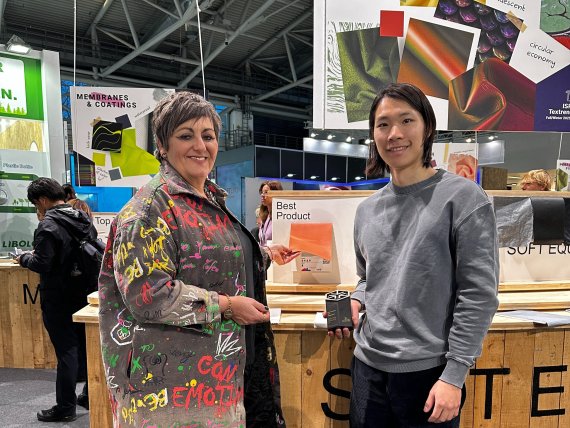
The best products, selected by a jury of textile experts, were announced and awarded following the presentation of the three most important megatrends for the future. The original megatrends, which were presented in 2013, form the basis for what we expect today. And the developments in the industry as a whole since then are worthy of every honor.
The megatrends continue to influence and promote developments on various levels, from sustainability, technology and digitalization to serenity and humanity!
The megatrends are multi-layered and influence not only the sports and outdoor industry, but also other sectors. And they are also reflected in our lives, which twist and turn. When looking at the three megatrends, it is noticeable that they are all interconnected and change with the development of new ideas.
As COP 28 kicked off in Dubai on the last day of ISPO Munich, the United Nations Climate Change Conference hit the headlines. Supposedly, unscheduled meetings on the oil and gas business were planned, and if that's not greenwashing, I don't know what is! Our goal is to limit the temperature rise to 1.5 degrees by 2030. And that doesn't mean that we have to completely dispense with synthetic and fossil fuels by then; we still need products from this sector. But we won't need as much because new alternatives are emerging.
At SHEEN, we are talking about sustainability and looking for new efficiencies and lower environmental impact. More and more textile mill sand manufacturers are investing in their own solar and wind power plants, and in November the whole country in Portugal was powered by renewable energy for six days. These achievements are becoming the norm, which is good news for the future.
We are focusing on the psyche of the consumer who wants performance and products without impacting the planet. Consumers are aware of the impact of climate change and have adapted their lifestyles by switching from cars to bicycles, reducing their waste, reusing everyday items and moving away from the throwaway society we have created. One example of this is refillable water bottles: Consumers want them, but water points need to be available in cities and facilities for them to use them.
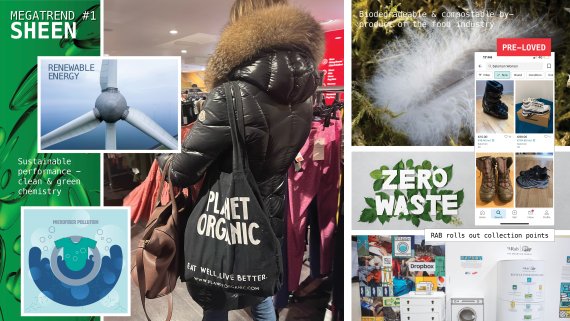
So it all depends on the infrastructure. The British outdoor brand RAB announced at ISPO in Munich that it would be setting up return stations in Europe. They want to get to grips with a situation that has become a problem at industry level in the past. Many brands offer take-back systems, but need to know where the product is going. RAB is taking responsibility and showing transparency, which appeals to consumers who want to be part of a cleaner and greener society.
Recycled plastics can be found throughout the textile industry, with nylon being sourced from marine waste - particularly fishing nets - and fabric waste from the ground. Other topics included microfiber pollution and fiber loss (shedding) during washing. This microplastic can end up in the food chain and in our intestines. Polygiene was awarded Best Product for Performance Finishes at ISPO Textrends for its new Shedguard finish, which reduces the problem of microfiber waste.
Waste is an area that is becoming more and more interesting. Nobody wants waste, so what do we do with it? Many brands presented their circular economy models, an important aspect to raise industry and consumer awareness. One waste product, the rubber seals from car windows, was collected by Chang Wong and turned into recycled PVB for basketballs, which was awarded the prize for the best product in the soft equipment category.
SHEEN's conclusion is clear: brands need to take responsibility. Consumers trust their brands to offer the best possible option in a competitive market where price and performance take precedence over sustainable features.
Sometimes it feels like taking two steps forward and one step back, because the LOGIC megatrend ties in with the SHEEN megatrend when it comes to creating new processes and reducing environmental impact. Human logic and logical thinking essentially correspond to common sense. This trend is about keeping things simple, not overcomplicating them, just creating clear facts.
If you want clean air in cities, you need pedestrian zones with cycle paths and electric cars - you don't have to be Einstein to understand that. Less storage, less production. Less waste, responsible design - the list goes on, and this message is being picked up by brands and retailers.
This logic also applies to the human-to-human connection and the unique creativity that must not be lost. Put down the cell phones, take a breath, meet, talk face to face, IRL, in real life! If we use technology to our advantage, we can organize collaborative meetings and training groups so we can physically meet. This is so important because humanity is becoming more and more isolated due to digitalization and AI.
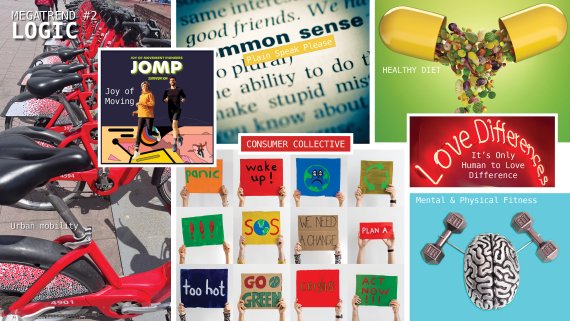
We need to network again and form communities. We are people! ISPO Munich has created an IRL experience for the sports and outdoor community- nothing can beat it. That's why JOMP (Joy Of Movement Pioneers) organized the traditional morning run on the first day of ISPO. JOMP aims to bring physical activity to the forefront and overcome the movement pandemic predicted for the next decade.
We need social connections, without them we tend to isolate ourselves. This is why more and more brands are setting up communities and running clubs - a manifestation of the Human-to-Human (H2H) movement. This is because disconnection from society and immersion in social media pose a major problem for mental health, especially for Generation Alpha, which is growing up and is even more connected as a result of digitalization. This is where sport plays a crucial role, and it was great to see mental coach Tobias Bosch inspiring the audience on mental strength in sport and business on the Pink Stage on the first day of ISPO.
Friend or foe? Either way, AI is here to stay and will continue to develop at an unprecedented pace. If we don't embrace it, we will be swallowed up by it. So the message of this megatrend is: how can we benefit from it?
Take the photo of the Pope in his white down coat. The picture went viral earlier this year. At first glance, I thought what a great puffer, and that he would wear one seemed only logical. I didn't bat an eyelid. Until it turned out to be an AI-generated image created by a Chicago designer using the AI tool Midjourney. The media claimed that this was the first case of mass misinformation and they were not entirely wrong. But the case also shows that a down coat is definitely always a good idea! So that's the current booth when it comes to AI and digitalization.
Textile and clothing factories are becoming increasingly automated, which in turn is linked to the other megatrends SHEEN and LOGIC. Intelligent tools are being used to reduce waste and stock levels. This makes sense, but we also need to use them to our advantage and to the advantage of consumers. Transparency and traceability have come to the fore, especially with the introduction of the EU's Digital Product Passport (DPP). This obliges brands to collect and share data throughout the lifecycle of a product and make it accessible in the form of a digital ID.
The main aim is to highlight the sustainability, environmental and recycling properties of a product as well as its manufacturing process and sourcing. But where to start? This is where Maxim Label and Packaging comes in. The company was recognized at ISPO Textrends for its Eco-Track system, which allows brands to compile all the information they need.
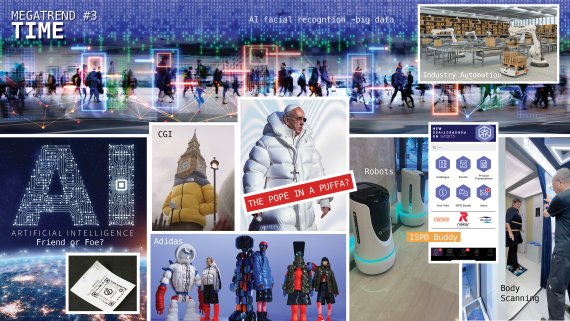
Digitally scanning the body can lead to an optimal fit and fewer returns, and apps that show the potential customer the garment or shoes are proving helpful in making the final purchase decision. The metaverse remains a coexisting environment where Adidas has launched a "phygital" collection for a collective of designers.
The supply chain benefits most from our industry by improving delivery and returns efficiency and massively reducing inventory levels with the help of AI. AI is also being used by brands as new merchandising, such as The North Face keeping Big Ben warm in London. It is a new interactive medium that allows brands to engage directly with consumers and share their experiences on social media.
So while AI is making waves and raising concerns about its potential, we should embrace it and make the most of it. That's what I did with the ISPO Buddy app - perfect information and scheduling during the trade show.
All of these points help us to advance and shape the industry as a global entity. The message remains the same: All together now! See you at Outdoor by ISPO.
To order a copy of the digital or physical ISPO Textrends trend book with the latest material developments, please click here.
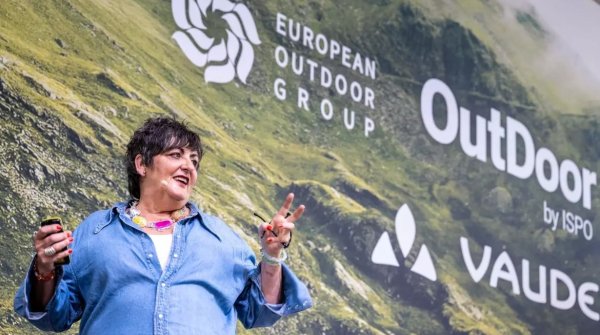 ISPO TextrendsISPO Textrends: Mega trends on the way to a positive future
ISPO TextrendsISPO Textrends: Mega trends on the way to a positive future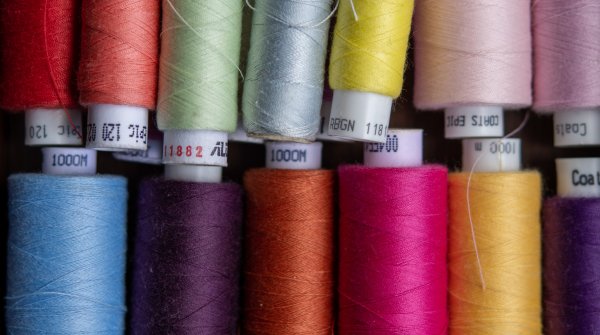 ISPO TextrendsISPO Textrends: Colors remain in flux
ISPO TextrendsISPO Textrends: Colors remain in flux
- ISPO awards
- Mountain sports
- Bike
- Design
- Retail
- Fitness
- Health
- ISPO Job Market
- ISPO Munich
- ISPO Shanghai
- Running
- Brands
- Sustainability
- Olympia
- OutDoor
- Promotion
- Sports Business
- ISPO Textrends
- Triathlon
- Water sports
- Winter sports
- eSports
- SportsTech
- OutDoor by ISPO
- Heroes
- Transformation
- Sport Fashion
- Urban Culture
- Challenges of a CEO
- Trade fairs
- Sports
- Find the Balance
- Product reviews
- Newsletter Exclusive Area
- Magazine

